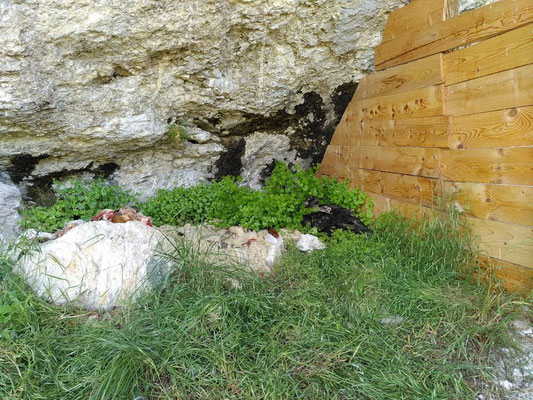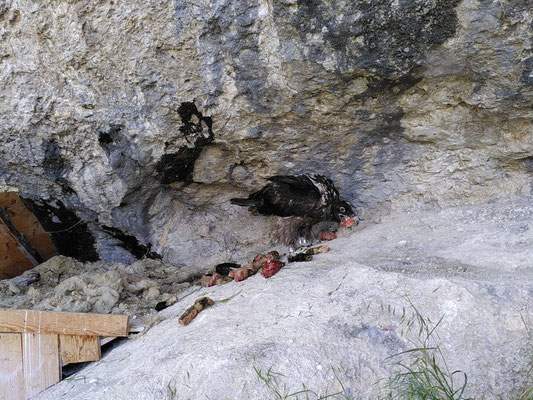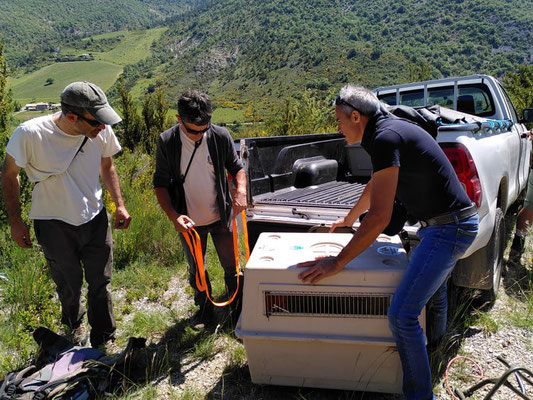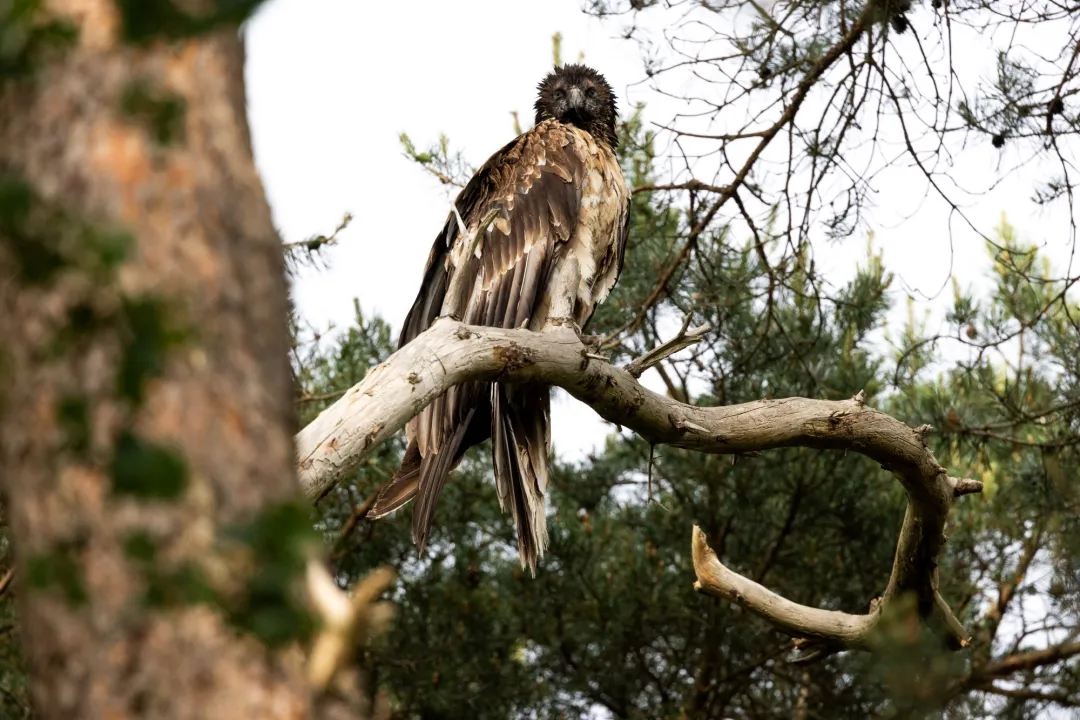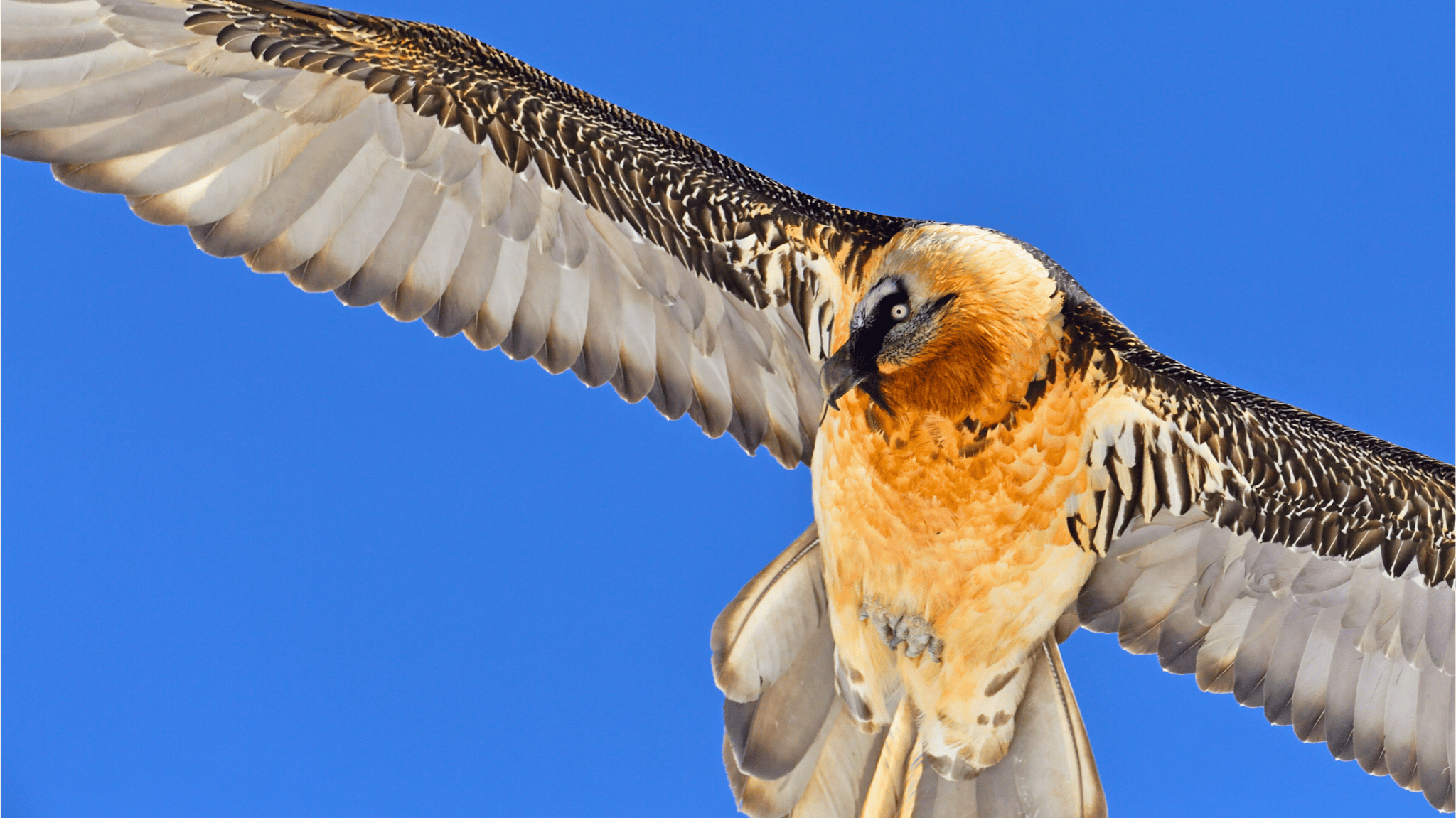
The first 2020 Bearded Vulture releases in France with the LIFE GypConnect project took place this Thursday 28 May in the south of Drôme! The LIFE GypConnect project aims to establish a breeding population of Bearded Vultures in the Massif Central, as well as in the Pre-Alps, through reintroduction, and promoting dispersal movements between the Alps and the Pyrenean population.
This breeding season, a total of 25 Bearded Vulture chicks are alive and healthy within the Vulture Conservation Foundation’s (VCF) Bearded Vulture Captive Breeding Network (EEP) that breed the species in captivity for conservation purposes. The VCF and its partners will release at least 21 young Bearded Vultures into the wild across six regions in Spain, France and the Alps to boost the local populations of the species, with the first releases of the season taking place in Andalusia, Spain, on 9 May 2020. Some of the birds that hatched will remain in captivity to address the sex-ratio imbalances and also to secure important bloodlines in the captive stock.
Releasing the Bearded Vultures
To create a healthy wild population, it is necessary to release birds from different bloodlines to avoid consanguinity. Consequently, nestlings are transferred through Europe, travelling thousands of kilometres. It took a lot more effort this time to coordinate the releases of these birds. With the COVID-19 crisis, it was even more challenging to acquire the right documents and coordinate the travel for both the birds but also the team members releasing them to the wild. But, hard work and perseverance paid off in the end! One bird travelled all the way from Liberec Zoological Garden zoo from Liberec, Check Republic and the other from Schönbrunn Zoo in Vienna, Austria. Bearded Vulture Sureau from Schönbrunn is most likely male and Angèle from Liberec, is most likely female.
The zoos collected blood samples to determine the gender of the birds and the genotype to include in the database and be able to recognize them again in the future. At the release site, the VCF and Vautours en Baronnies equipped the birds with GPS transmitters, bleached their feathers and ringed them for monitoring purposes. Following this, the team hiked to the hacking platform to release the birds. We release Bearded vultures using the hacking method, which is more or less the “natural” way of fledging. The role of the parents at that time is to protect nestlings against predators, supply them with food and provide social contact. So, Vautours en Baronnies will now monitor the birds to ensure their safety and feed them without human contact until they fledge the nest.
With the arrival of these two young, the project has now released 12 Bearded Vultures in the Baronnies region, which extends from south-east of Drôme to west of Hautes-Alpes. In total, the LIFE GypConnect project reintroduced 27 Bearded Vultures in France since 2016.
The LIFE GypConnect project is now awaiting the arrival of seven other chicks coming from Germany, Italy, Spain and Bulgaria, which will be released soon in Vercors and Aveyron.
You can stay tuned with the releases in France and other European regions by tracking #BeardedVultureReleaseSeason on Facebook, Twitter, LinkedIn and Instagram!
LIFE GypConnect

Led by the League pour la Protection des Oiseaux (LPO), the LIFE GYPCONNECT project aims to establish a breeding population of Bearded Vultures in the Massif Central and Department of the Drôme. Releasing captive-bred Bearded Vultures into the wild at sites such as the Parc Naturel Régional des Grands Causses, Parc Naturel Régional des Baronnies Provençales and Parc Naturel Régional du Vercors will create a core population that will connect the two populations of the species in the Alps and Pyrenees. To facilitate movements between the new population and the Alpine and Pyrenean populations the LIFE GYPCONNECT team is creating a network of supplementary feeding stations, and tackling threats such as poisoning, and collision and electrocution with the electricity infrastructure.


